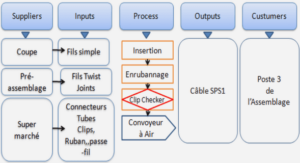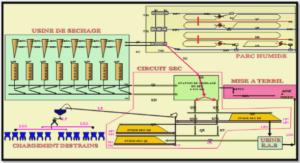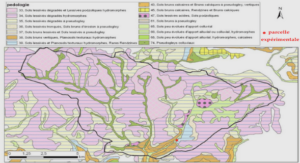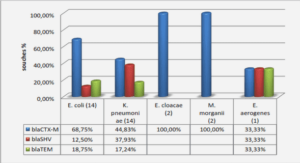Dynamic N-mixture abundance modeling
Woodland salamander population dynamics and body condition under irregular shelterwood systems
Résumé
Un des principes de l’aménagement forestier écosystémique consiste à émuler les perturbations naturelles lors des activités de récoltes forestières. Les coupes progressives irrégulières (CPI) sont un nouveau type de traitement sylvicole prometteur en forêt mixte, mais leurs conséquences sur la biodiversité sont méconnues. La salamandre cendrée (Plethodon cinereus), étroitement liée aux débris ligneux, joue un rôle important dans l’écosystème des sols forestiers. Le but de ce projet était de déterminer l’impact de trois types de CPI (coupes en lisière, en trouée et en micro-peuplement), relativement à des sites témoins, sur les dynamiques de populations et la condition corporelle de salamandres cendrées. En tout, 64 sites de la région du Témiscamingue ont été échantillonnés à 10 reprises réparties durant l’été 2015 et 2016 dans lesquels deux méthodes d’échantillonnage ont été testées soit les refuges artificiels et des quadrats d’échantillonnage. Les analyses de dynamiques d’abondance ont montré que l’abondance des salamandres des individus ne variaient pas selon les trois différents patrons de coupes de CPI, ni selon les paramètres environnementaux mesurés. Par contre, nos résultats montrent des effets annuels: la condition corporelle des adultes était supérieure en 2015 qu’en 2016 et la probabilité de détection des salamandres adultes était plus élevée en 2016. Pour les juvéniles, leur condition corporelle diminuait avec la progression de la saison et elle était la meilleure dans les traitements en plein et était la plus faible dans les trouées. Ces résultats suggèrent globalement que les CPI maintiennent les attributs d’habitat nécessaires au maintien des populations de salamandres cendrées, 5 à 7 ans après la première coupe.
Abstract
Ecosystem-based management aims to preserve old-growth forest attributes using techniques mimicking natural disturbances. Irregular shelterwood logging is a new method applied to mixed forests, but its impacts on forest floor organisms are poorly known. The aim of this study was to quantify the effects on the population dynamics and body condition of a terrestrial salamander, the red-backed salamander (Plethodon cinereus) in three different treatments of irregular shelterwood (strips, uniform and gaps) 5 – 7 years following harvesting compared to old-growth forest controls. A total of 64 sites in the Témiscamingue region were sampled on 10 occasions during the summer of 2015 and 2016. Two sampling methods were tested, namely artificial refuges and sampling quadrats. Analyses showed that salamander abundance and body condition of individuals did not vary according to the three different irregular shelterwood patterns or the environmental parameters measured at the sites. However, the body condition of adult salamanders was lower in 2016 than in 2015 and the detection probability of adult salamanders was greater in 2016 than in 2015. The body condition of juvenile salamanders decreased with increasing Julian day and the body condition of juveniles was also highest in uniform treatments and lowest in gaps treatments. We conclude that environmental conditions 5 to 7 years following treatments in the three patterns of irregular shelterwood harvesting are similar to controls in terms of their capacity to support terrestrial salamander populations.
Introduction
In the context of improving ecosystem-based management, irregular shelterwood systems have recently been proposed for forest stands that are affected by partial stand mortality and subject to gap dynamic processes (Raymond et al., 2009, 2017). Indeed, this silvicultural method can maintain and restore irregular stand structures, by a series of partial cuts (Raymond et al., 2009; Lussier and Meek, 2014), which can produce stands with 2 to 4 age groups (Schütz, 2001; Kelen and Lessard, 2004; Raymond et al., 2009). Hardwood and mixed forests of northeastern North America, where gap dynamics processes are the main natural disturbances, are particularly well suited for the implementation of irregular shelterwood systems (ISS). In these forests, gaps are small and result in uneven-aged stands (Lorimer and Frelich, 1994).In such forests, irregular shelterwood treatments could maintain a large proportion of native biodiversity, increase the long-term sustainability of forest management and be a good alternative to clearcutting for regenerating balsam fir-yellow birch stands (Raymond et al., 2009; 2017). This is especially the case when objectives of the ISS is to maintain a minimal volume of coarse woody debris (CWD) beyond critical thresholds required by several organisms such as amphibians.
The density of CWD is closely related to the abundance of amphibians (DeMaynadier and Hunter, 1995; McKenny et al., 2006; Semlitsch et al., 2009), because terrestrial salamanders use CWD as shelter, foraging, and nesting substrates (Otto et al., 2013). The presence of CWD can reduce the negative short-term effects of logging (Gore and Patterson 1985; McKenny et al., 2006; Otto et al., 2013) and may also help maintain a viable environment for amphibians (Moseley et al., 2004). Thus, studying population parameters in relation to CWD is important in the context of future biomass removal as an alternative source of biofuel and the alarming decline of global amphibian populations (Alford and Richards 1999, Houlahan et al., 2000, Stuart et al., 2004). For instance, in Canada, 42% of amphibians are designated as at-risk by the Committee on the Status of Endangered Wildlife (COSEWIC) and their main threat is habitat loss and degradation (Alford and Richards, 1999; Lesbarrères et al., 2014).
Amphibians and terrestrial salamanders in particular, play a key role in forest ecosystems as they are the main predators of the detritivore food web (Burton and Likens, 1975; Hairston, 1987; Hickerson et al., 2017) and represent prey of choice for several animals (Pough et al., 1987). The eastern red-backed salamander (Plethodon cinereus) is the most abundant vertebrate in many North American forests (Burton and Likens, 1975; Petranka et al., 1994). The species has a philopatric behavior and a small home range (Yurewicz and Wilbur, 2004). Because they are deprived of lungs, plethodontid salamanders depend on a moist environment that allows gas exchanges for their cutaneous respiration (Heatwole and Lim, 1961). These salamanders occur on the surface of the forest floor when temperatures and humidity are ideal for cutaneous respiration, otherwise they migrate vertically up to 90 cm deep in the ground for long periods (Grizzell, 1949). These vertical migrations follow the seasonal cycle, with more individuals on the surface during spring and fall than summer (Taub, 1961; Fraser, 1976; Jaeger, 1980). These biological characteristics and physiological restrictions make this salamander a fascinating model to study population dynamics (Feder, 1983; Welsh and Droege, 2001), particularly in a context of new sylvicultural techniques, such as irregular shelterwood systems. Since irregular shelterwood is a new forest management strategy, few studies have focused on the quantification of their impacts on ecosystems or on forest floor fauna (Homyack et al., 2011). Demographic studies are particularly important to quantify the effects of such treatments on salamander population structure to better assess their efficiency in mimicking natural disturbances.
The main goal of our study was to quantify the impact of three patterns of irregular shelterwood treatments (expanded gaps, uniform and strip cuttings) on the population structure of eastern red-backed salamanders. We aimed (1) to evaluate the changes in the population dynamics of juveniles and adult salamanders and (2) to evaluate the body condition of salamanders among sylvicultural treatments. We hypothesized that salamander abundance is lower in the intensive treatment, strip cutting, because this treatment reduce habitat quality such as decreasing litter depth or CWD volume. We also hypothesized that fewer juveniles occur in populations found in slow-regeneration treatment such as, strip cutting, than in controls, because smaller salamanders have a potentially lower survival probability in disturbed forest stands due to their higher proportional evaporative water loss than large salamanders (Spight 1968). We also hypothesized that body condition of adult and juvenile salamanders is lower in the strip cuttings. Finally, we hypothesized that the probability to detect a salamander is highest under weather conditions favourable for surface activity of salamanders, especially when sampling periods occur within 48 hours following precipitations.
Methods
Study area
We conducted the study in the Témiscamingue administrative region of western Québec (Canada), within the sugar maple-yellow birch bioclimatic sub-domain (MRNFP, 2003). The study area is located 70 km east of the town of Temiscaming, near Petit Lac Caugnawana (46°36° N, 78°26° W, Fig. 2A). Three different irregular shelterwood treatments were carried out in the study area in winter 2009–2010 (Joanisse et al., 2013). Specifically, a total of 38 ha was then treated by expanded gap cutting, 88 ha by strip cutting, and 27 ha by uniform irregular shelterwood cutting, whereas a total of 62 ha was used as an untreated control. Expanded gaps consisted in creating four gaps per hectare, each having an average size of 400 m2 from stem to stem. The uniform and strip irregular shelterwood cutting treatments were modifications of the slow regeneration shelterwood treatment (Joanisse et al., 2014). Strips of irregular shelterwood consisted of sequences of three 10-m wide strips, oriented east to west and harvested in multiple passes. The third treatment, uniform irregular shelterwood, was subjected to specific silvicultural prescriptions determined according to the stand unit characteristics (Lussier and Meek, 2014). Site preparation by scarification was applied in three patterns of irregular shelterwood, where regeneration of yellow birch was deficient and where the machinery could move without injuring residual trees. Site scarification was performed to mix the first 5 cm of the litter with the mineral soil. These irregular shelterwood treatments were the first of a planned series of three cuts. For additional details on the irregular shelterwood treatments applied in the study area, see Suffice et al. (2015).
We randomly selected 64 sites in our study area: 18 sites of the strip cutting treatment, 18 sites of the expanded gap treatment, 10 sites of the uniform irregular shelterwood, and 18 control sites (Fig. 2B). Each site was of 80 m² and we maintained a minimal distance of 70 m between each site.
Figure 2. Study area. A) Localization of the Témiscamingue region in western Quebec. B) Distribution of the sites according to irregular shelterwood treatments: expanded gaps (red dots), strip cuttings (orange dots), uniform irregular shelterwoods (yellow dots), and controls (purple dots).
Sampling design We sampled each site four times in summer 2015 (June 5 – July 28) and six times in the summer of 2016 (May 9 – July 28). The sampling regime was based on Pollock’s Robust Design with primary and secondary periods of sampling (Pollock, 1982). Here, primary periods consisted of the four or six visits during 2015 and 2016, respectively. Secondary periods consisted of the two sampling methods used on a given visit (see below). During a given primary period, all sites were visited within 6 days. We separated the 64 sites into 6 areas and visited the sites in a random sequence to avoid visiting the sites in the same order at the same time of day. We maintained 9 days between each primary period in a given year.
On each visit, we employed two sampling techniques at each site to increase salamander detection probability. The first technique consisted of spruce coverboards (25 cm x 30 cm x 2.5 cm) as artificial refugia. Coverboards were deployed in a grid of 3 m x 3 m centered on each site in autumn 2014. We maintained 1 m between adjacent coverboards in a given grid (Fig. 3). The second method consisted of quadrat searches (3 m x 3 m) adjacent to the coverboard grid (Fig. 3). During each visit, we searched the coverboard grid to capture salamanders. We searched a single 3 x 3 m quadrat on each visit, looking under the litter, logs, and rocks (> 5 cm) to find salamanders. We did not tear CWD apart to avoid deteriorating the habitat and cover objects were carefully replaced in their original position after a search. Coverboards were checked within 5 minutes, whereas quadrat searches took between 15 and 20 minutes. Salamanders captured with either sampling technique were temporarily placed in individual plastic bags in the shade to limit desiccation and avoid capturing individuals twice in a sampling session. We weighed salamanders (0.01 g) and measured their snout-vent-length (0.1 mm) (from the snout to the anterior part of the cloaca). Salamanders were classified as adults (> 32 mm) or juveniles (≤ 32 mm; Sayler, 1966). Salamanders were released at their point of capture immediately after the survey.
Figure 3. Sampling design representing a coverboard grid in the center of a gap treatment (9 m2) and the quadrat searches at the periphery of the site (9 m2). A different quadrat was sampled on each visit in 2015, whereas a quadrat sampled on a given occasion in 2016 could potentially be sampled four primary periods later (drawn to scale).
Site habitat characteristics
We measured basal area (m2/ha) among treatments in a 400 m2 plot (11.28 m radius) in which all tree stumps and logs, with a minimum of 10 cm dbh, were classified by tree type (coniferous or hardwood). We visually estimated the vegetation percent cover of grasses, ferns, mosses, shrubs, and bare ground in four subplots (1 m x 1 m) located at each of the four cardinal directions of the site, in the peripheral area of the coverboard grid. We estimated canopy opening at these four points with a spherical densiometer (Model- A). We measured soil compaction using a penetrometer (Model- Geotest E-280 Pocket Penetrometer, USA) at 10 points on the site (two in each subplot and two at the center of the site). The penetrometer gives a resistance measure of the soil surface expressed on a scale from 0 to 5. We measured the litter depth at ten systematic points in each quadrat searched (9 m2) and coverboard grid.
We measured the basal and apical diameter as well as the length of every CWD found in every quadrat searched. We only measured parts of the CWD that were within the quadrat limits. We assigned all woody debris (stumps and logs > 5 cm) to early- or late-decay classes, adapted from Fauteux et al., (2012). Woody debris in the early-stage decay class had at least a few branches, with or without bark, were hard (> 75%), round, and the tip of a knife could penetrate < 0.5 cm into the wood. The late-stage decay class included soft or very soft and deformed woody debris, often without branches, and a knife could penetrate > 5 cm into the wood. We applied the conic–paraboloid formula (Equation 1. in Fraver et al., 2007) to estimate the volume of each CWD found in the quadrats searched. Thereafter, we calculated the mean of all the quadrats to obtain a single value per site.
|
Table des matières
Chapitre 1. Introduction générale
Les défis de l’implantation de l’aménagement écosystémique en forêts mixtes et feuillues
Importance des amphibiens dans les écosystèmes forestiers
Effets des pratiques sylvicoles sur les populations d’amphibiens
Effets des traitements sylvicoles sur la disponibilité des débris ligneux
Une tendance en émergence en herpétologie: l’estimation de la détection imparfaite
Objectifs
Chapitre 2. Woodland salamander population dynamics and body condition under irregular shelterwood systems
Résumé
Abstract
Introduction
Methods
Study area
Sampling design
Site habitat characteristics
Weather variables
Statistical Analyses
Dynamic N-mixture abundance modeling
Estimation of salamander population dynamics
Estimation of salamander body condition
Results
Environmental characteristics in irregular shelterwood treatments
Salamander captures
Salamander population dynamics
Salamander body condition
Discussion
Population dynamics
Body condition
Quality of forest floor in irregular shelterwood
Detection probability
Conclusion
References
Annexes
Chapitre 3. Conclusion générale
Recommandations
Bibliographie .
![]() Télécharger le rapport complet
Télécharger le rapport complet





